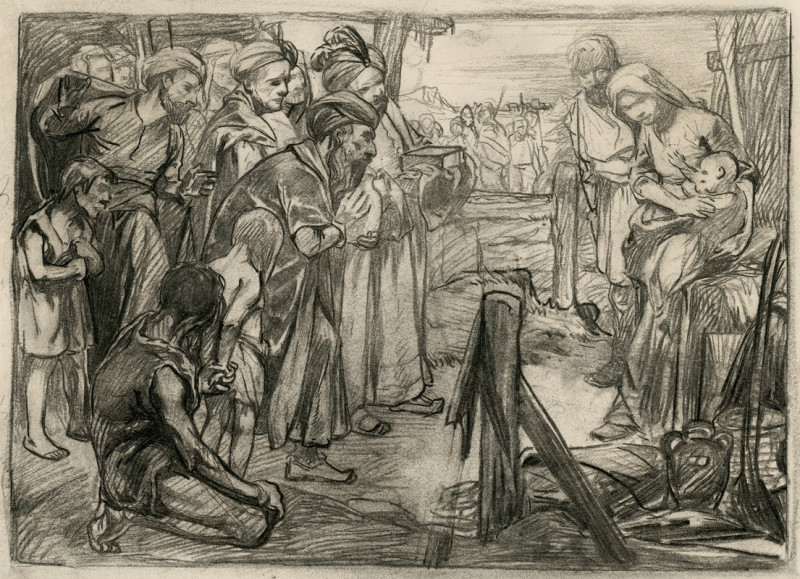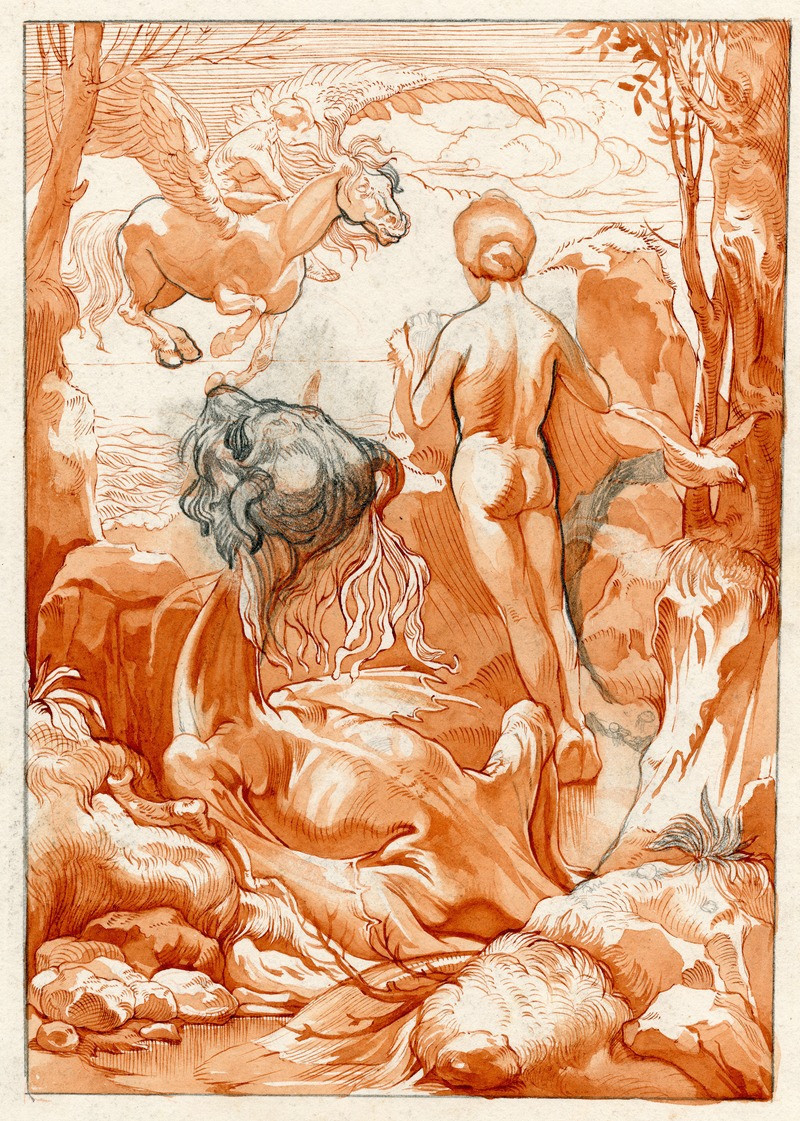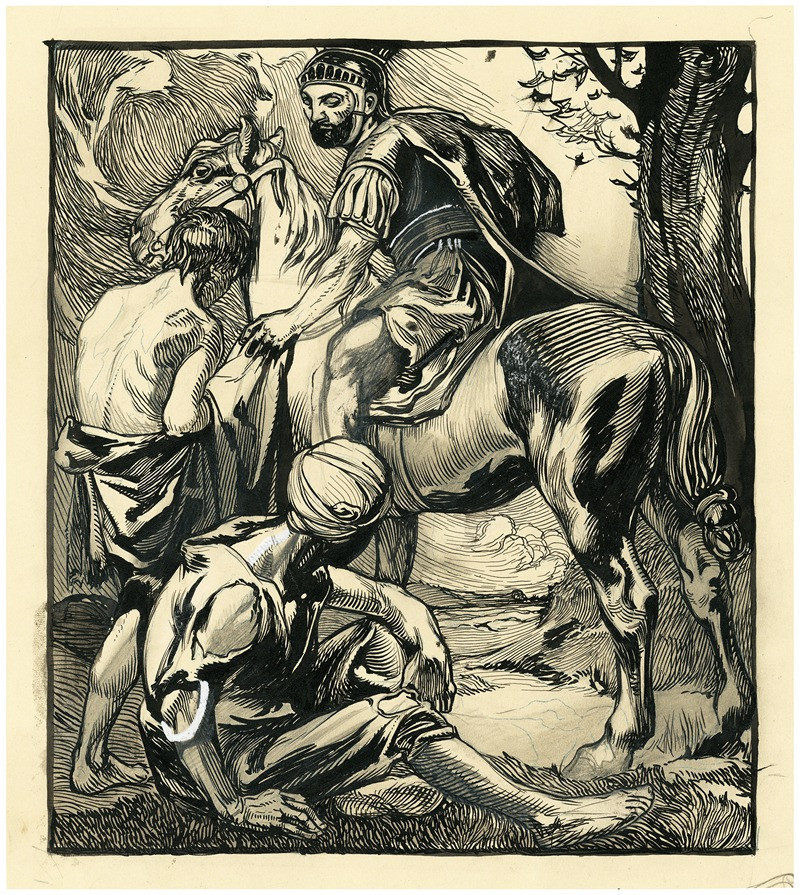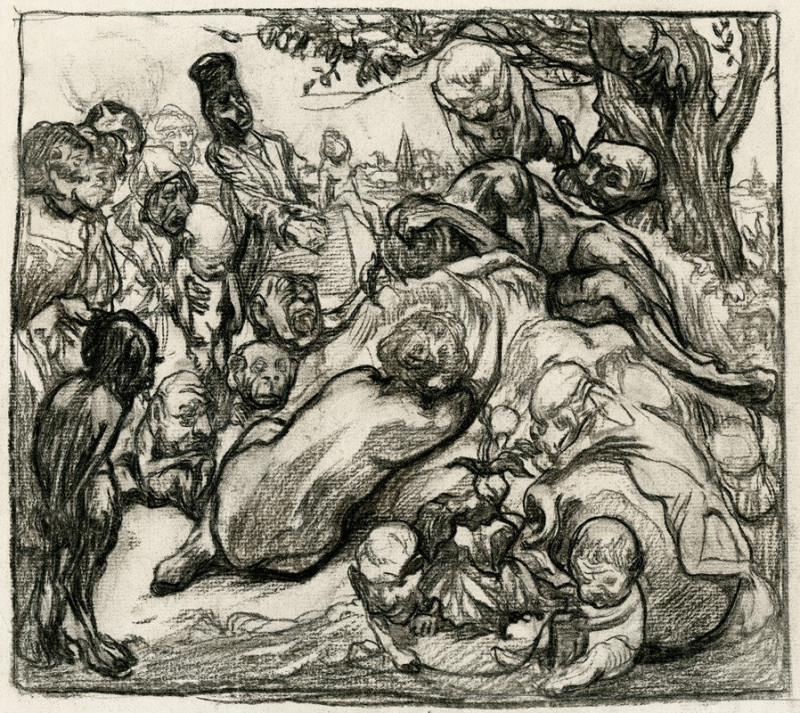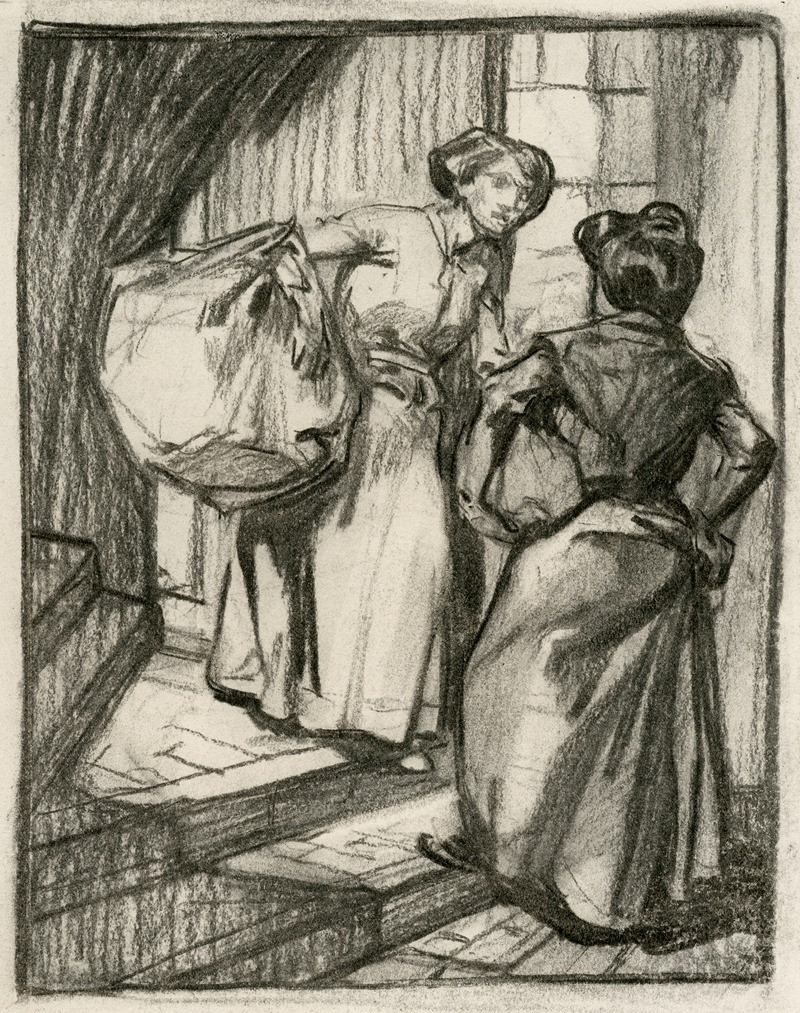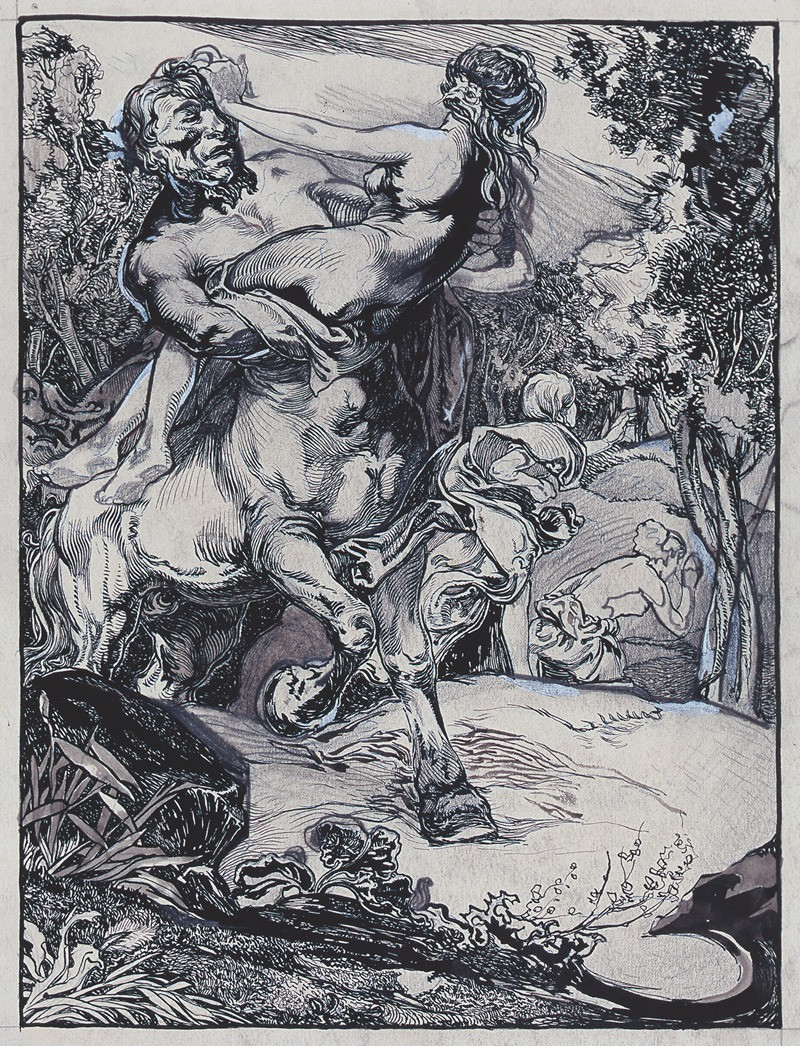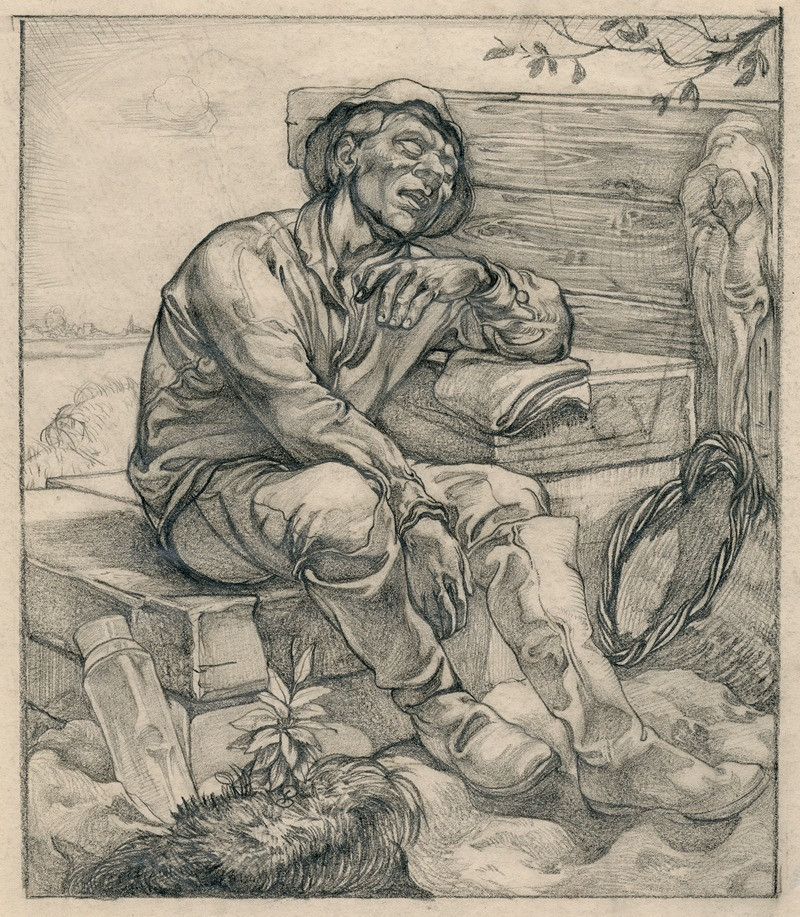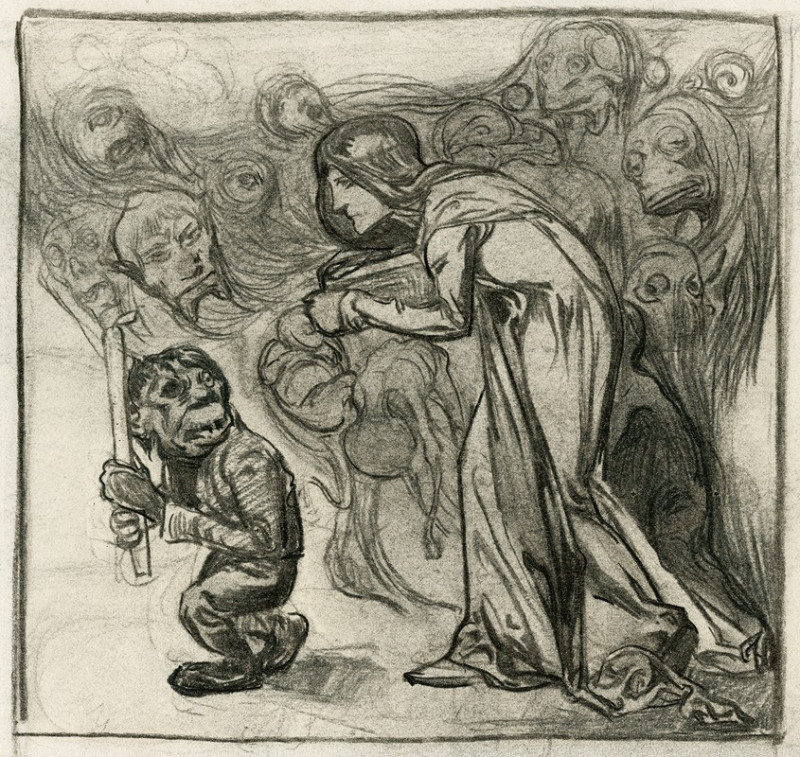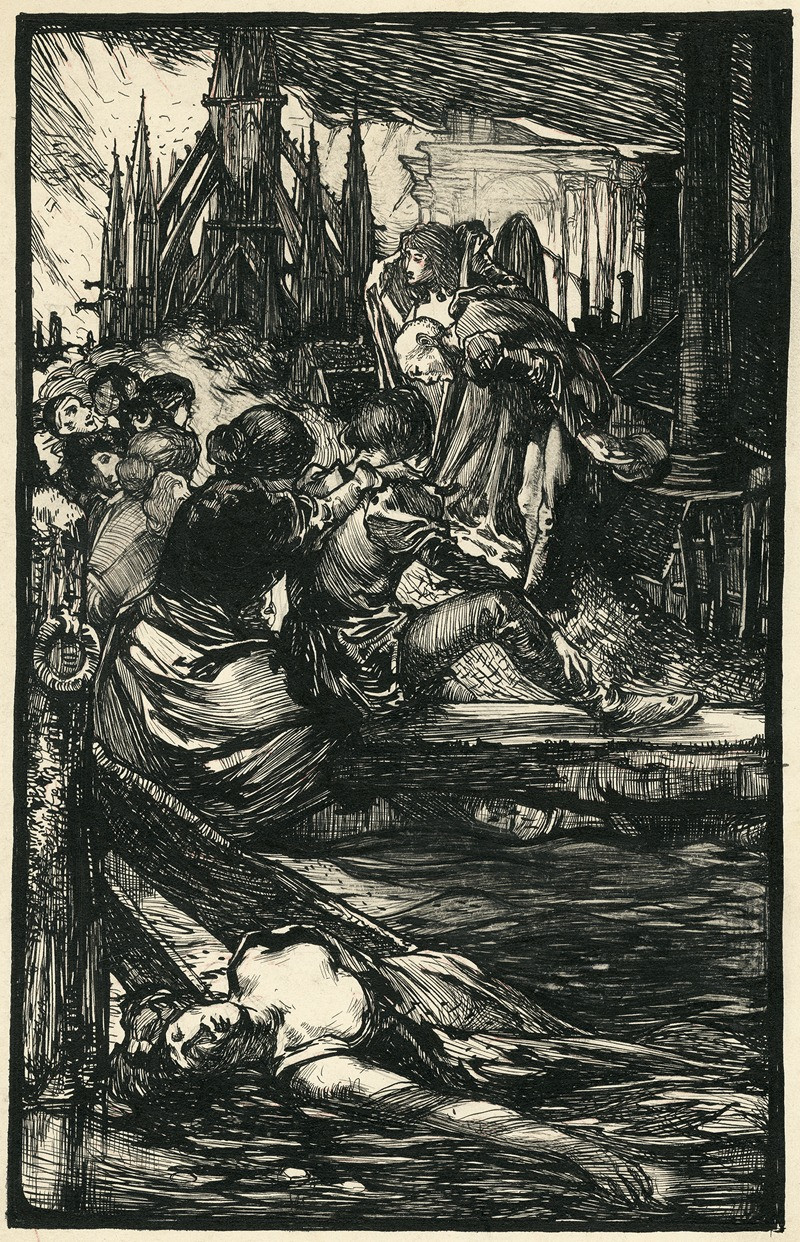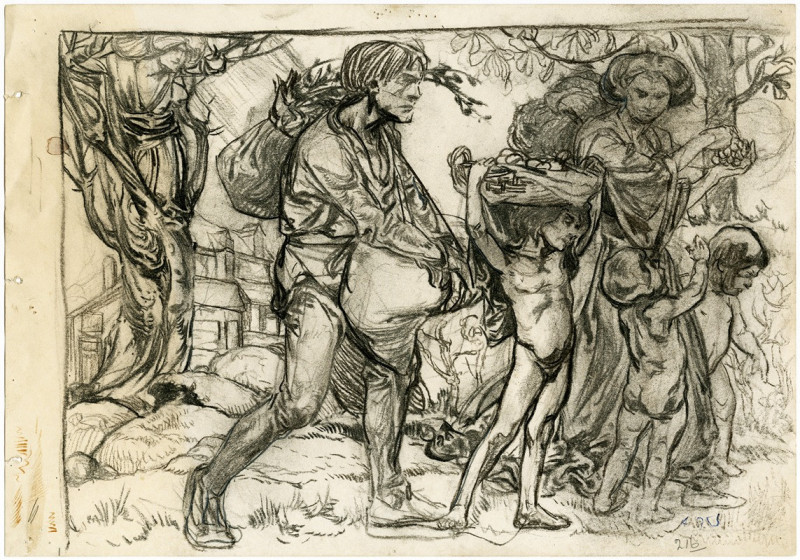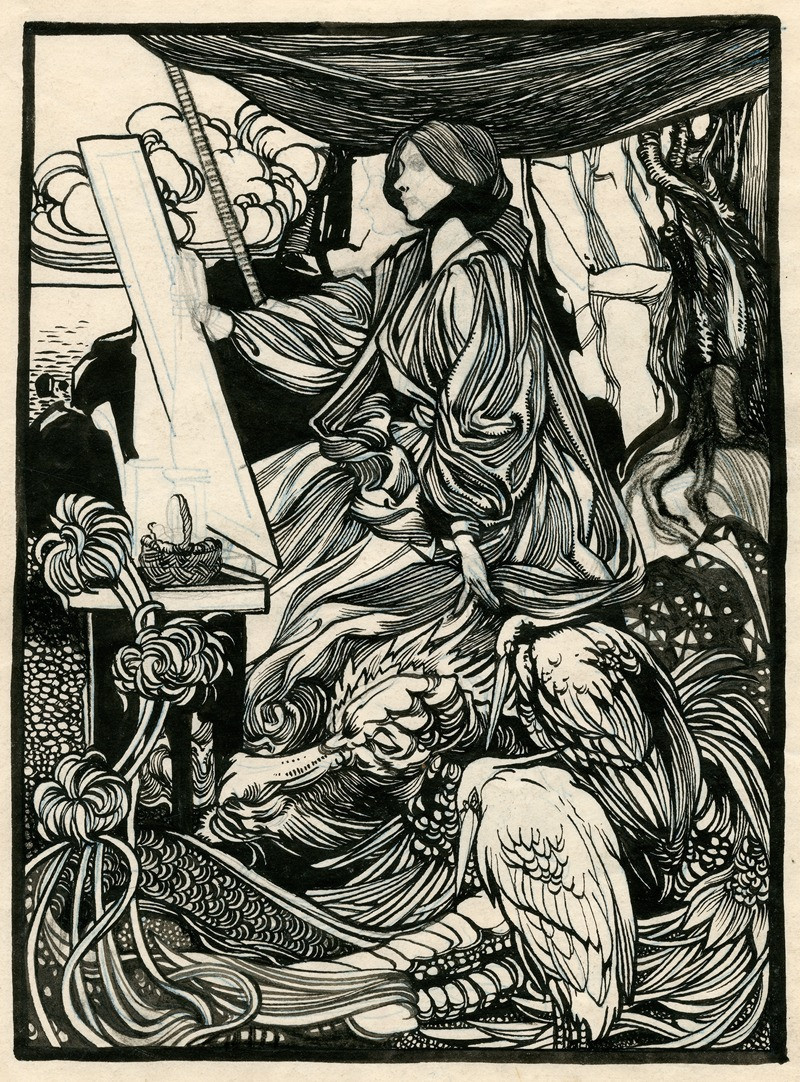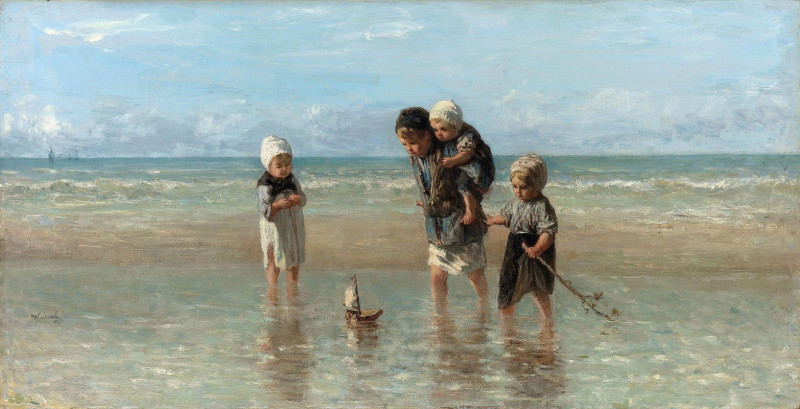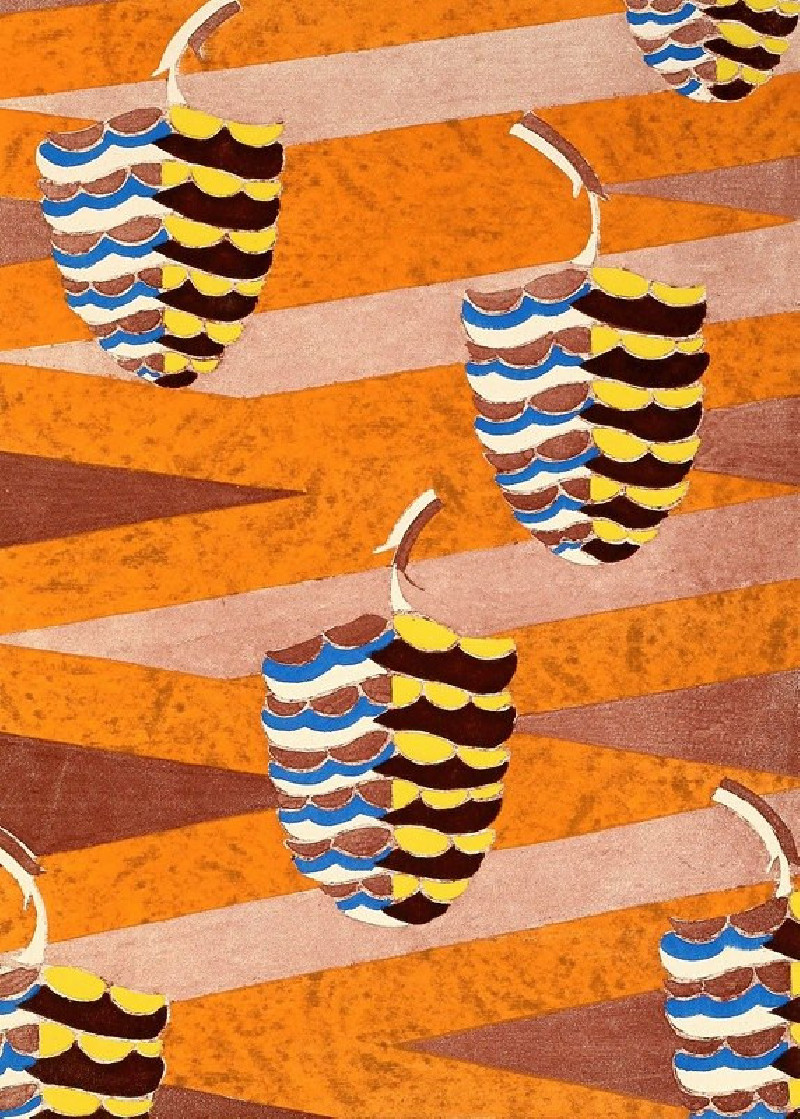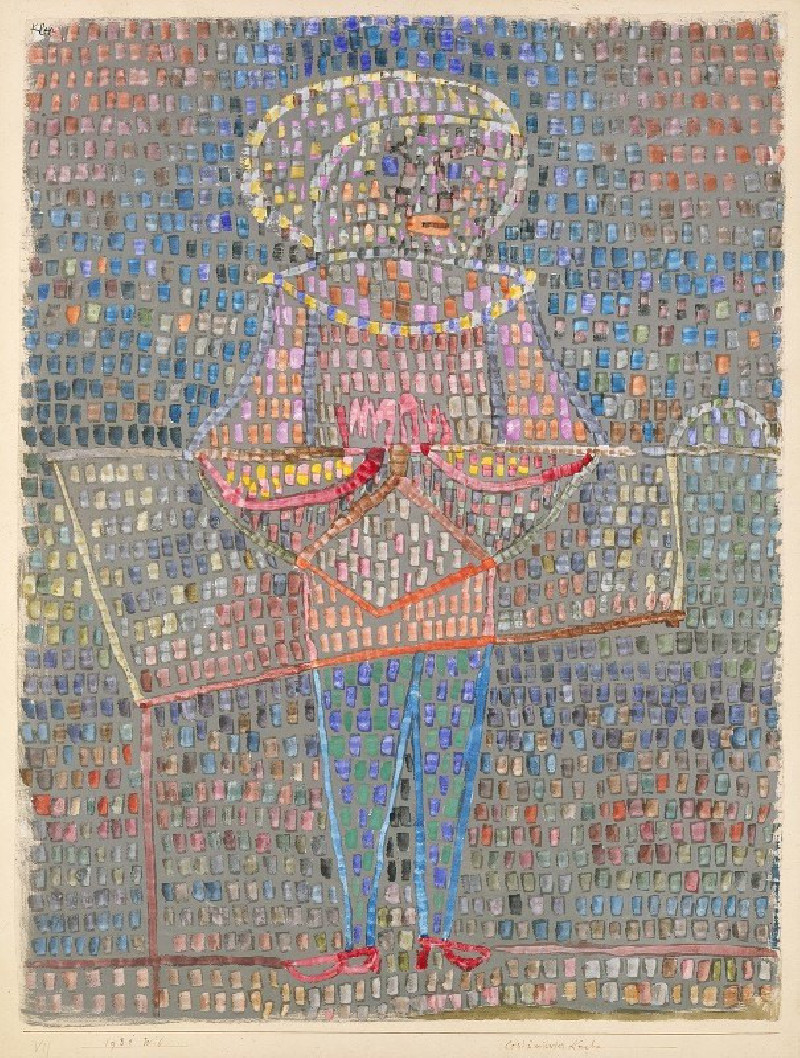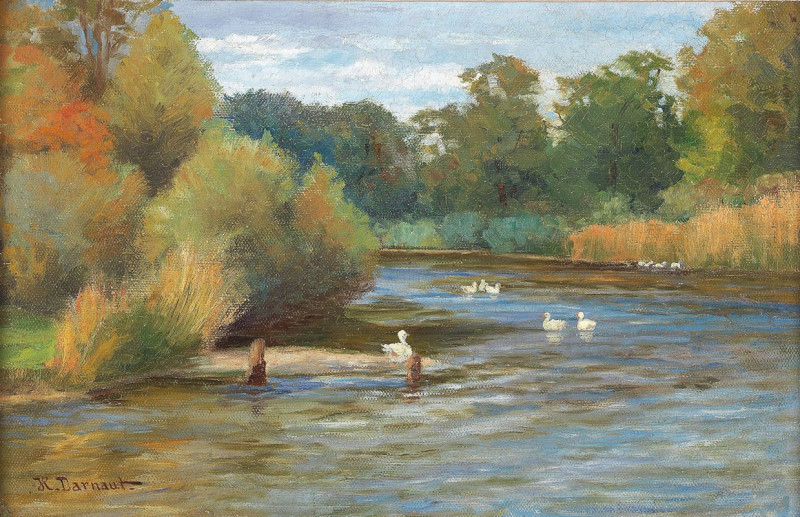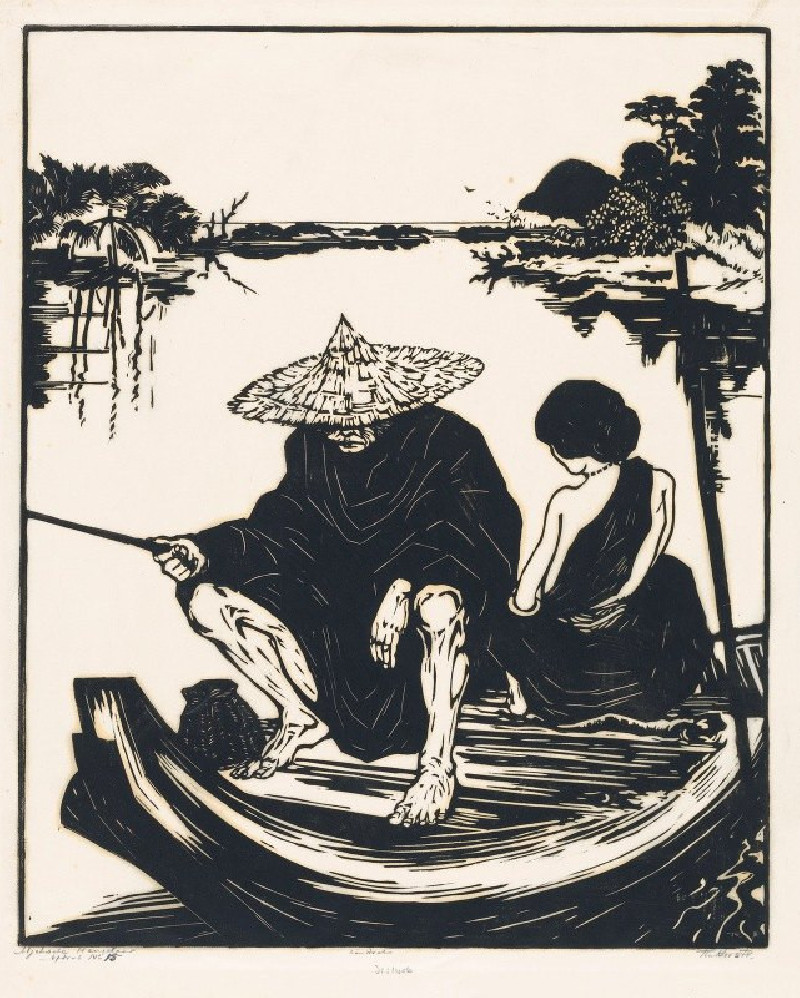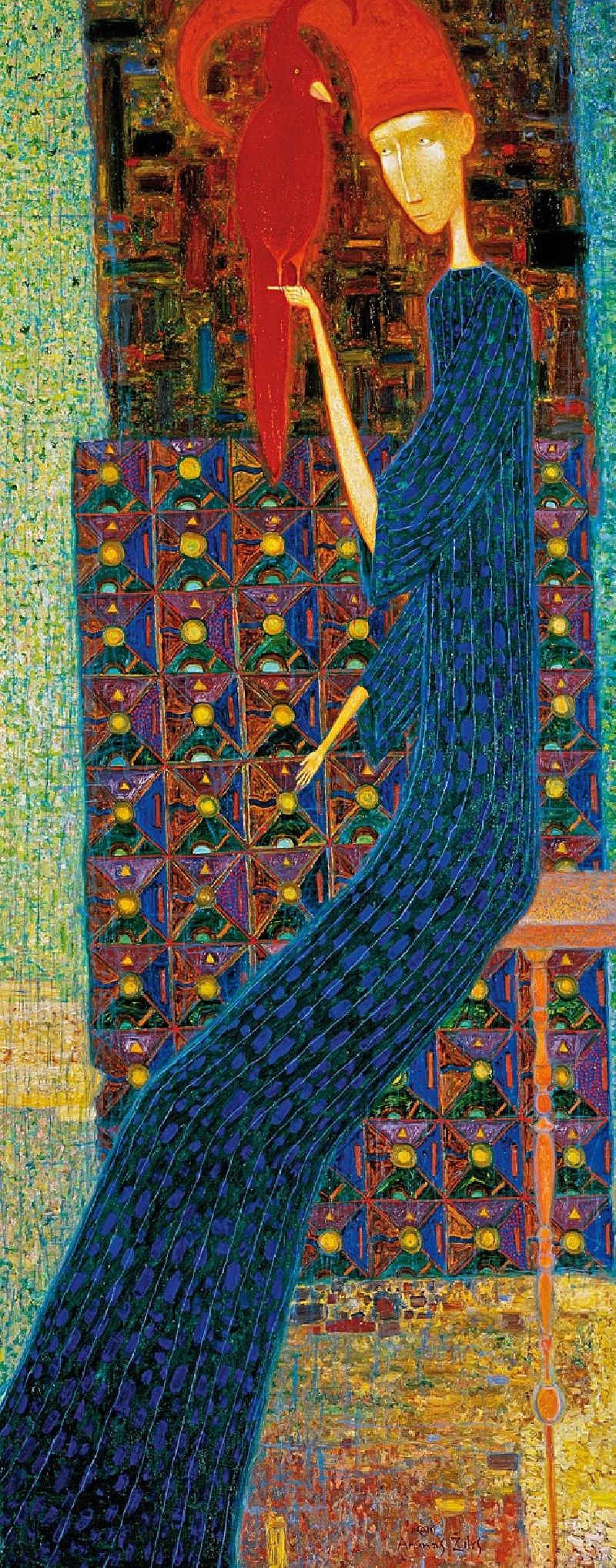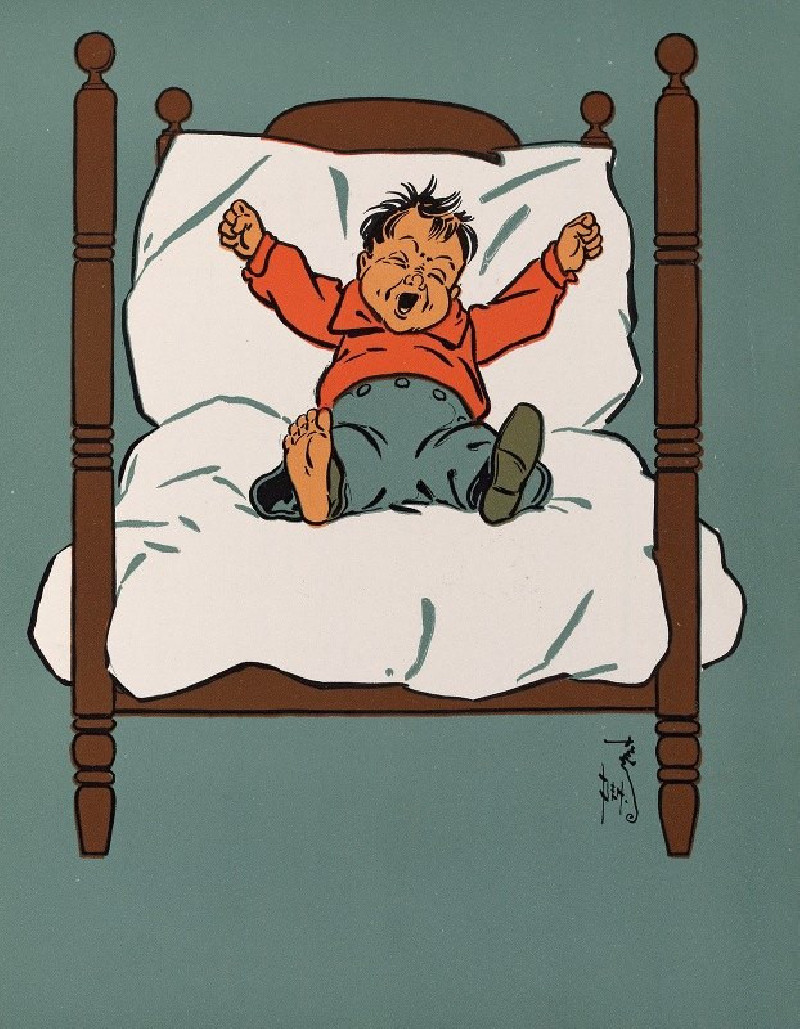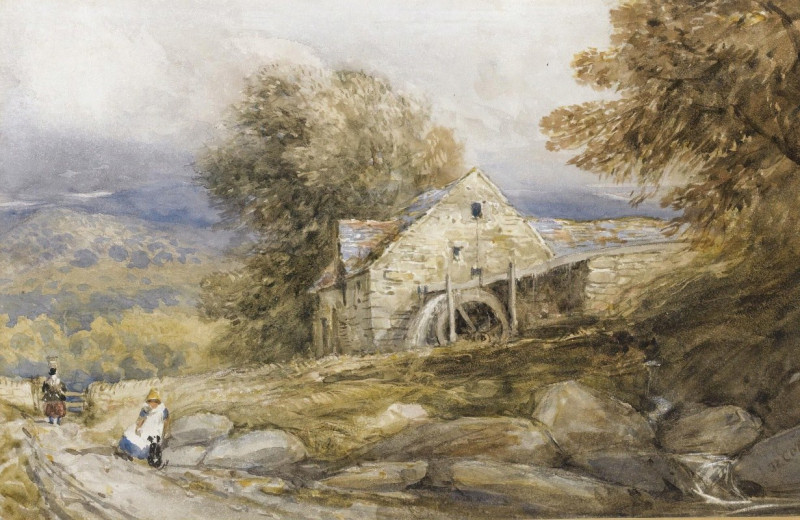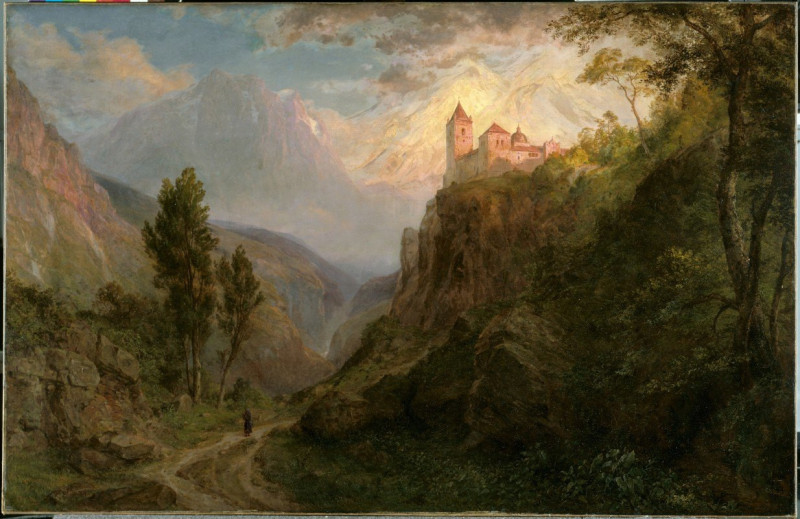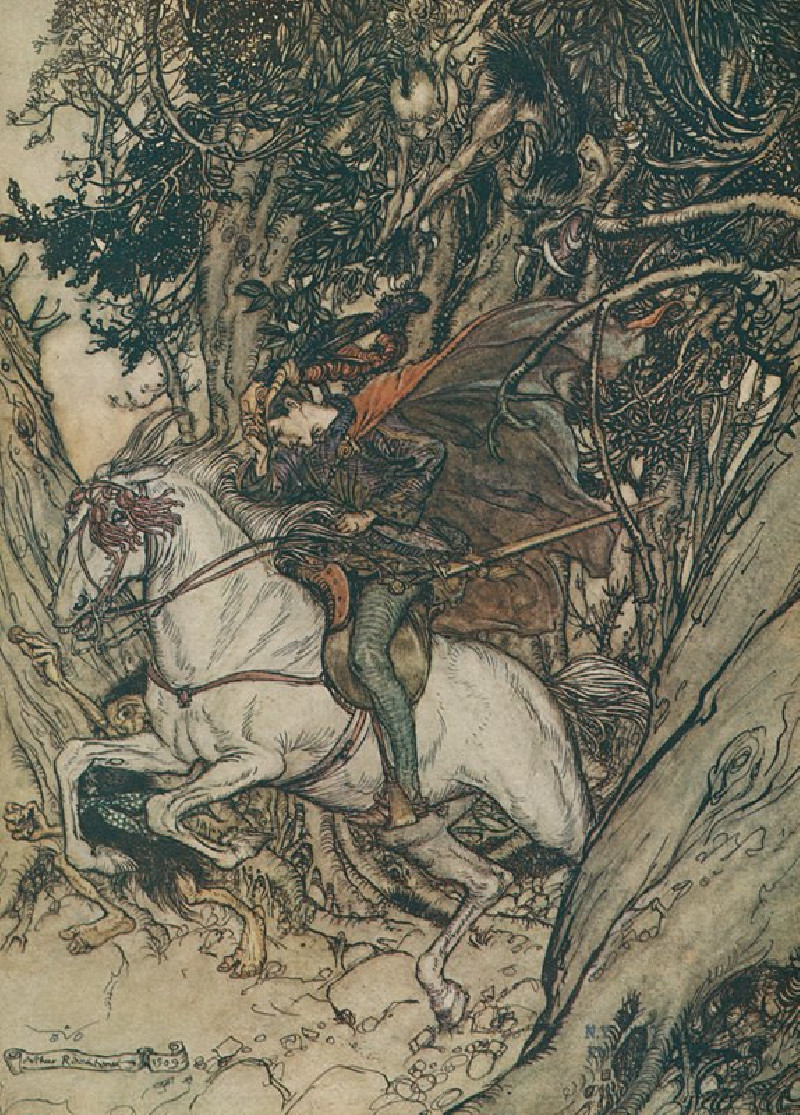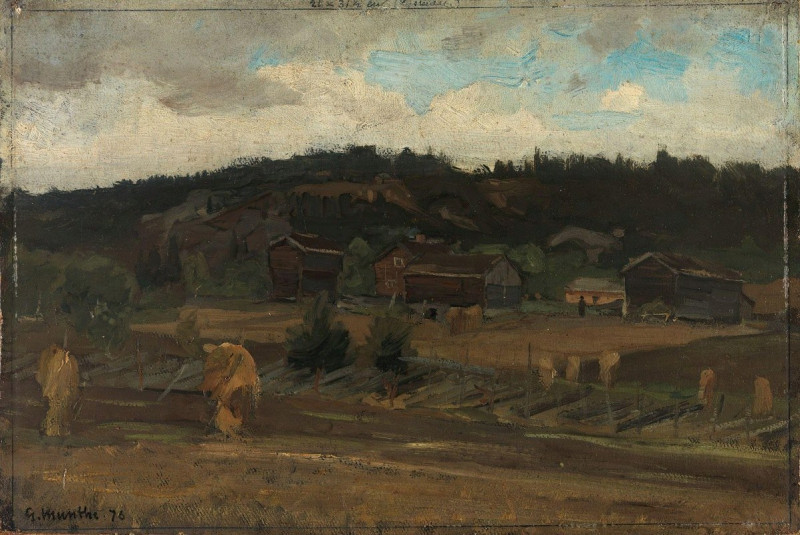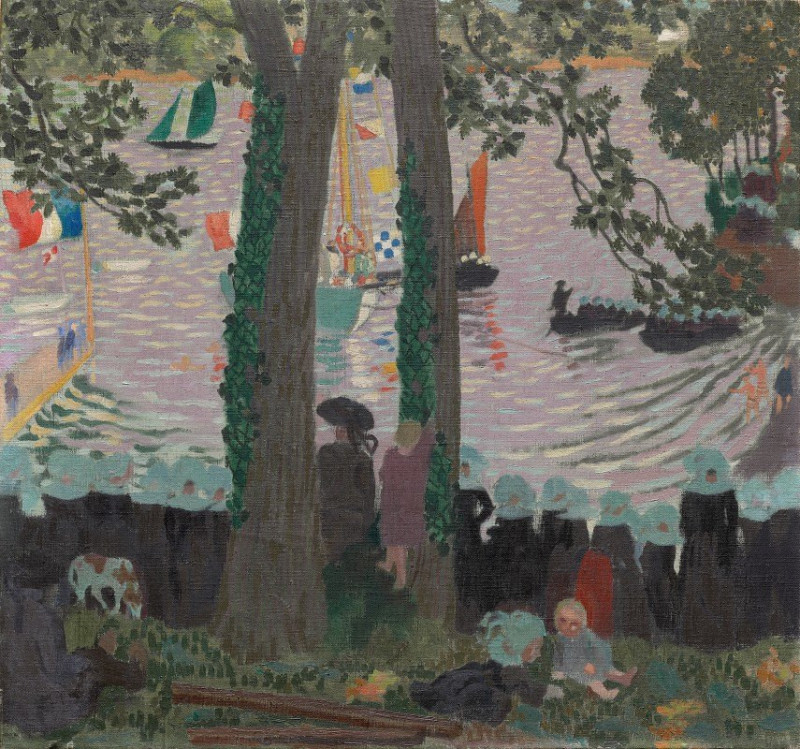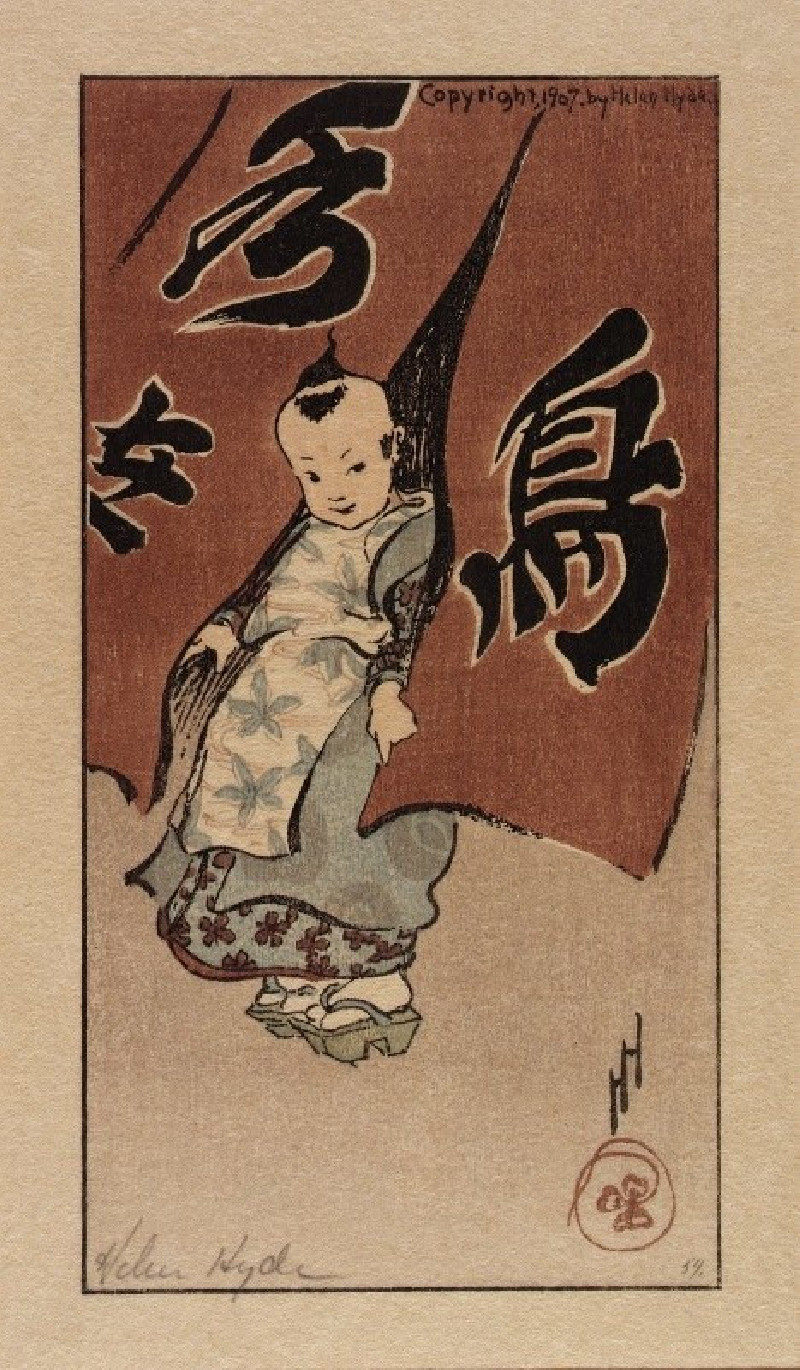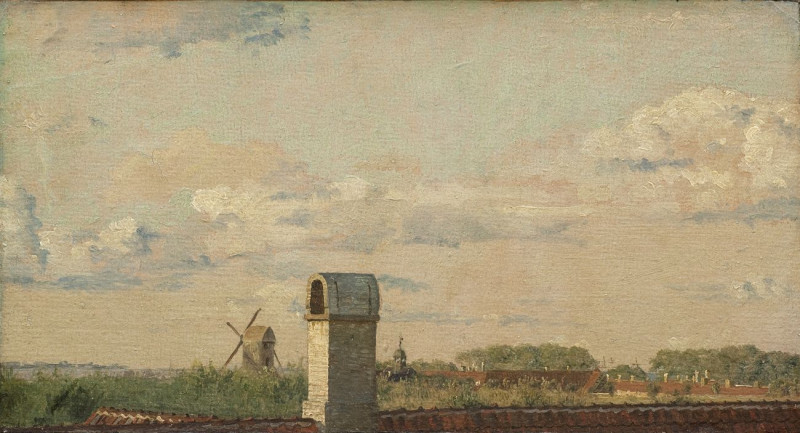Man en sfinx
Technique: Giclée quality print
Recommended by our customers
More about this artwork
Dive into the enigmatic world of Johannes Josephus Aarts with his compelling piece, "Man en sfinx." This intriguing artwork showcases Aarts' mastery in etching and drawing, reflected in the detailed and expressive lines that bring a mythical narrative to life.The artwork is divided into two distinct sections, providing a glimpse into the artist's creative process from sketch to final execution. On the left, we see a preliminary sketch with looser, more exploratory strokes. This part of the drawing captures the fluidity of thought and the evolution of ideas as Aarts develops his composition.The right side presents a more refined and detailed depiction, where the interaction between man and sphinx is poignantly captured. The central figures—a muscular man and a majestic sphinx—are entwined in a dramatic pose. The man, exhibiting a mixture of strength and contemplation, interacts closely with the sphinx, a mythical creature known for its riddles and mystique. The sphinx's wings envelop the scene, adding a layer of complexity and fascination to the interaction.The use of stark contrasting shadows and detailed textural elements in the final etching highlights the emotional intensity and the thematic depth of the piece. Aarts' skill in using light and dark not only defines the physical forms but also enhances the symbolic undertones of human inquiry and mythical wisdom."Man en sfinx" invites viewers to ponder the deeper meanings of knowledge and mystery, making it a profound addition to any art collection.
Delivery
Returns
Johannes Josephus Aarts was a Dutch painter, illustrator, lithographer, engraver, etcher, writer, academic teacher and director, lecturer, sculptor and book-cover designer.
Jan Aarts received training in the Royal Academy of Art, The Hague. He was active there until 1911, and in Amsterdam from 1911 to 1934. Initially, until around 1900, Aarts worked above all on engravings. Thereafter he began to also use other graphic methods. In his work, one found depictions of farmworkers, dyke workers and later also tramps, beggars and invalids. Between 1920 and 1930 he produced mostly visionary work with apocalyptic scenes.




